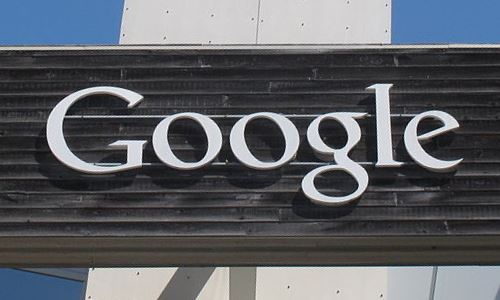Google Inc. (NASDAQ: GOOGL) is becoming a very hard company to analyze and for investors to understand. The company’s most recent split was not really a shareholder stimulus plan by any stretch of the imagination, by our take, as it gave Larry Page and Sergey Brin just that much more control over the company.
In a period when the Nasdaq, Dow Jones Industrial Average and S&P are still up handily for 2014, what on earth does a 52-week low mean for Google? At $510 or so, Google’s 52-week range is $506.62 to $615.05. The notion that the consensus analyst price target is nearly $650 just seems hard to fathom at this time.
By the view of 24/7 Wall St., investors are getting more and more confused on how to view and analyze Google. So, what exactly is Google now — and what do investors want it to be?
First and foremost, Google is the number one search engine. comScore showed that Google’s search engine ranking was 67.0% of the search market in October of 2014. That was down 0.3 points from a year earlier, but that compared to 19.5% share of Microsoft and 10.3% share of Yahoo.
How are investors supposed to value the Android operating system? Sure, Google has bitten into the Windows-dominated markets. How profitable is that in the grand scheme of things? Motorola Mobility was bought for $12.5 billion.
YouTube has proven to be a great acquisition for Google. With advertising dominance being present, the DoubleClick acquisition also likely has been monetized handily as well. The problem is the “everything else” under the Google chest. Those help on the surface, but what about the rest? How will driverless car technology, involvement in space, alternative energy, biotech and advanced health care, and everything else play out?
Gmail was considered to be in “beta” for years. Does Google make much off of Chrome, or is it just a tool that helps it in search and the ads that are needed to support it? Drive has also gone after the Microsoft dominance in document generation.
ALSO READ: Gold and Silver Outlook for 2015
Google Ventures is reportedly betting more and more on new life sciences projects, and Fierce Biotech just outlined how Google poured more than one-third of its $425 million venture fund into health care and life sciences ventures in 2014. Will Google be a biotech or life sciences player, or just benefit from funding them?
Google Maps have been a greatly used item, and the future there may be much larger.
Is Google Glass really a winner? That depends on whom you ask, but the wearable cam-glasses are hard to envision as a great new multibillion business line.
While Wikipedia has to be double-checked, it lists that Google has made some 173 acquisitions, including life sciences, the cloud, apps, advertising, shopping, publishing, collaboration, artificial intelligence and many more purchase targets. And what about a “Buy” button now up for discussion?
Will home automation really take off? And will its multibillion price paid for Nest pay off? Yes to the first, eventually. Maybe, on the second question, because the home automation market is not without many providers.
Will Google TV truly take off? Amazon, Roku, Intel and many others want their bite in the market as well. Did Google’s book effort really do anything? What about Google’s massively fast broadband efforts in select cities around the country?
HubSpot Inc. (NYSE: HUBS) provides a cloud-based inbound marketing and sales software platform for businesses. Sequoia Capital, Google Ventures, and Salesforce.com provided $32 million in venture funding in 2011. This is a $1 billion company, but it is going to take dozens and dozens of these IPOs to make a dent here. Hint, Google’s value is close to $350 billion, with close to $60 billion in cash and liquid assets.
Then there was Google’s Wallet effort, as well as Sites, and Voice — and Blogger, which is considered old-school blogging now.
ALSO READ: 10 Dying and 10 Thriving U.S. Industries
Google’s alternative energy bets were almost certainly not looking at the price of oil, but valuations in solar and other alternative energy projects have come crashing down during oil’s monumental decline. (Remember the argument that these are just leveraged oil bets?) Here are the projects that Google has financed on its green energy site:
- Regulus: Repurposing an oil and gas field for renewable energy
- SunPower: investing in residential solar
- Panhandle 2 Wind Farm: financing wind in Texas
- Recurrent Energy: solar facilities in California and Arizona
- Mount Signal Solar: financing solar in California
- Jasper Power Project: investing in South African solar
- Spinning Spur Wind Farm: investing in West Texas wind
- Rippey Wind Farm: financing wind power in Iowa
- Recurrent Energy: large scale photovoltaic projects in California
- Clean Power Finance: financing for rooftop solar
- SolarCity: solar for thousands of residential rooftops
- BrightSource: concentrated solar power at scale
- Atlantic Wind Connection: a superhighway for clean energy transmission
- Alta Wind Energy Center: harnessing winds of the Mojave
- Shepherd’s Flat: one of the world’s largest wind farms
- Peace Garden Wind Farms: opening up more financing for wind
- Photovoltaics in Germany: investing in clean energy overseas
So, 24/7 Wall St. wants to ask: Are you confused yet? All these other efforts are effectively funded by a few avenues of revenue and income. We did not even scratch the surface on all the efforts that Google has going on now and that it has tried in the past.
Google is simply becoming more and more complicated to analyze each quarter, and Larry and Sergey can simply say “Trust us, it is all for a reason…” The question is whether these efforts will ever come close to paying for themselves for Google’s shareholders.
ALSO READ: The 7 Best Investments of 2014
Thank you for reading! Have some feedback for us?
Contact the 24/7 Wall St. editorial team.



